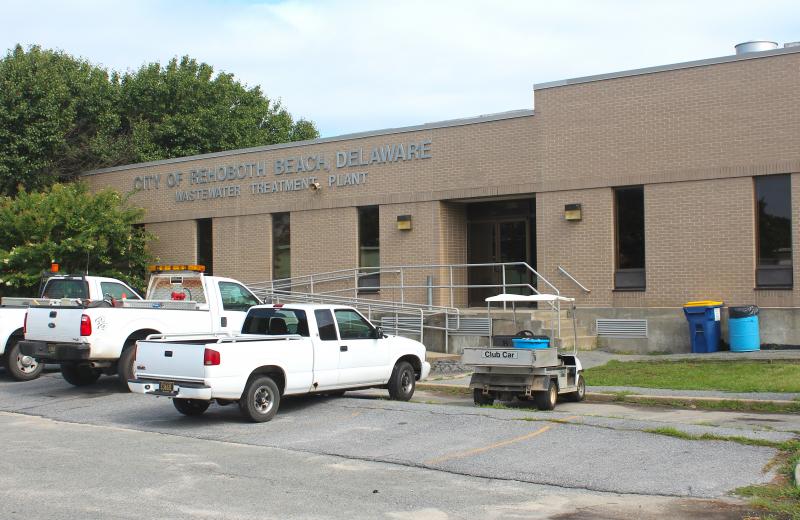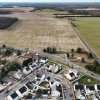Rehoboth set to vote on flat-rate utility structure
Rehoboth Beach commissioners appear to be set to vote on a new structure for wastewater and water rates.
During a workshop Aug. 5, a consensus was reached by commissioners to change the water and wastewater rate structure from a peak/nonpeak system to a flat-rate system. The next meeting is scheduled for Friday, Aug. 16.
A utility rate working group, formed in January by Mayor Paul Kuhns, evaluated infrastructure needs for the two utilities over the next 12 years. According to an executive summary prepared by the group, the water fund shows a projected shortfall of $20 million based on estimated requirements for the water system; the wastewater system shows a projected $25 million shortfall.
During a presentation to commissioners in June, the group proposed a flat-rate structure to replace the current peak/nonpeak structure. As proposed, for every 1,000 gallons used, the city would charge $14.70 for wastewater and $6.30 for water for the first four years of the 12-year cycle. The group proposed adjusting the flat rate every four years.
Additionally, the group proposes a ready-to-serve fee for the two utilities that is unrelated to usage. Those served by a 1-inch meter, an estimated 96 percent of users, would be charged about $125 annually for wastewater and about $42 annually for water. For those with a 2-inch meter, annual fees would rise to $452 for wastewater and about $154 for water. The ready-to-serve fees increase for 3-inch, 4-inch and 6-inch meters, but total ready-to-use revenue collected by the city would decrease because there are very few meters of more than 2 inches.
To begin paying debt and making improvements, the city approved an interim rate increase in April – water increased 30 percent; wastewater increased 60 percent.
Under the working group’s proposal, in an interview Aug. 8, Public Works Director Kevin Williams said the water rate will be closer to a 40 percent increase, while the wastewater rate will be closer to a 70 percent or 75 percent increase.
Williams said the 30 percent and 60 percent increases would have covered costs only for the current fiscal year. He said rather than change the rates every year, the group proposed a four-year cycle where rates cost more than needed in the beginning, but less than needed in the end.
In addition to paying for needed infrastructure improvements, the proposal incorporates a total of $800,000 in reserves for water and wastewater, and removes a wastewater contribution to the city’s general fund. Going forward, under the proposed plan, that contribution would be captured in the water rate.
Williams said over the past decade, the two utilities contributed approximately $700,000 a year to the city’s general fund. He said the group proposed all of that contribution should now come from the water utility; the group thought the wastewater rates are basically maxed out.
Williams said he knows some residents want to remain with the peak/nonpeak method, but he said the flat-rate structure is easier to administer and more fair for everyone.
“A vast majority of the people are going to be very, very close on costs,” said Williams. “Pennies for some, dollars for others.”
Donna Mabry is one of the residents who continues to voice her concerns with the change. She said she understands the city needed money for past and future improvements, but it’s not fair to change the rules of the game as bills come due.
Suzanne Goode is another concerned resident. She has spoken against the flat-rate structure at every opportunity. She says it’s not fair to property owners who have a more equal flow rate throughout the year. She said she was disappointed the commissioners were moving forward on changing rates developed by a working group that began their assignment with a foregone conclusion.
Williams said he wouldn’t describe it as winners and losers if the flat-rate system proposal goes through. There are going to be some people who see percentage increases, he said, adding that he had run the numbers since the workshop and a 50/50 split is not the norm. He said 78 percent of the 1-inch users see 70 percent of their flow during the peak season, defined as April through September.
During the workshop, Commissioners Stan Mills and Toni Sharp, neither of whom sought re-election this year, expressed concern with how poorly the city had explained the need to change from a peak/nonpeak system to a flat-rate one.
“It’s very troubling,” said Sharp.
Williams said from the beginning, the working group was working to establish the most fair rate structure possible. He then pointed to the executive summary prepared by group as its reasoning for the change.
“The group determined early on that the current rate system was too heavily weighted towards water meter size which is not necessarily reflective of water and wastewater usage,” reads the executive summary. “As a result, the group favored development of a flow-based rate system that more fairly allocates costs to those users who generate the capital and operational expenses that need to be offset.”
Before the workshop discussion concluded, City Solicitor Glenn Mandalas reminded commissioners the vote will be taken in public, but it does not require a public hearing.
The commissioner meeting is scheduled for 3 p.m., Friday, Aug. 16, in the commissioners room of city hall, 229 Rehoboth Ave.
Chris Flood has been working for the Cape Gazette since early 2014. He currently covers Rehoboth Beach and Henlopen Acres, but has also covered Dewey Beach and the state government. He covers environmental stories, business stories and random stories on subjects he finds interesting, and he also writes a column called Choppin’ Wood that runs every other week. He’s a graduate of the University of Maine and the Landing School of Boat Building & Design.




















































